
A bare
There are, however, a variety of plants your bluey can eat and that can be used to add character and life to their
In this article we’ll look at some of the most popular plants for your blue tongue skink, including everyday herbs, ferns, flowers, succulents, and even grasses.
Table of Contents
Do Blue Tongue Skinks Eat Plants?
Yes, blue tongue skinks are omnivores and, therefore, eat a combination of animal and plant matter. Your blue tongue skink cannot eat all plants, however.
Some plants can poison and even kill your blue-tongue skink. That is why we’ve also included a list of plants you should never give to your bluey later in this article.
The Pros and Cons Of Using Real Or Fake Plants In Your Blue Tongue Skink’s Tank
| Using Real Plants In Your Blue Tongue Skink’s | |
| Pros | Cons |
| When you use real plants, you give your bluey a more natural environment to live in. | Some of the plants need quite a bit of TLC or need to be replaced quite often. |
| The setup of the | You have to trim some of the faster-growing plants quite regularly to keep the plants from taking over the |
| If your bluey does eat some of the plants in their | You need to know which plants are non-toxic to your blue tongue skink (keep reading to find out!). |
| Because you have to spend more time on the | You may not have enough time to spend on the |
| Using Fake Plants In Your Blue Tongue Skink’s | |
| Pros | Cons |
| You don’t have to worry about watering fake plants. | Your bluey may chew on the plants and ingest some plastic by accident. |
| They don’t need TLC or to be trimmed, etc. | Fake plants can become tatty after a while. |
| You can easily rearrange the plants without having to worry about damaging their root system. | Your bluey can become bored because the plants in their |
| You can plant them anywhere in the | Your |
16 Plants That Are Safe To Use In Your Blue Tongue Skink’s Tank
Here are 16 plants that you can use in your blue tongue skink’s
1. Basil (Ocimum basilicum)
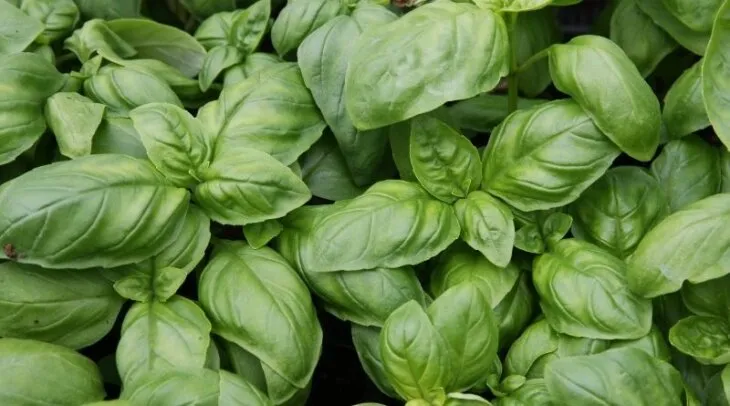
Not only good with tomato pasta sauces, but your blue tongue skink will also enjoy munching on some basil (leave the rest of the pasta dish out, though).
This herb is easy to grow, but be aware that the soft leaves and stems of the basil plant will also be wrecked quite easily by your blue tongue skink.
Be prepared, therefore, to have basil in the
2. Beet Greens (Beta vulgaris)
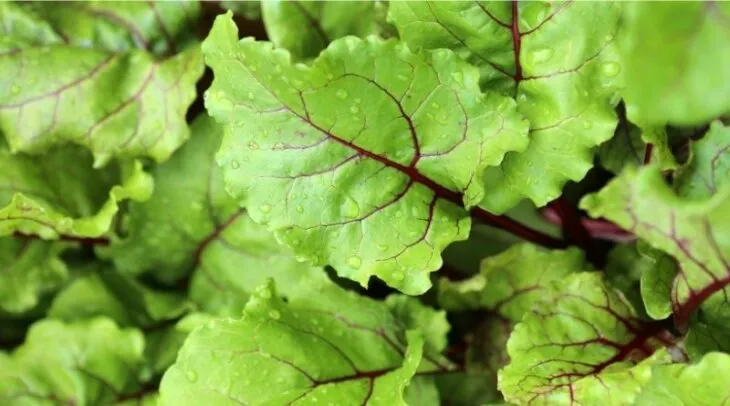
Beet greens – or beet leaves – can be given to your blue tongue skink to eat and you can easily grow your own beet greens from beet tops. By using only the beetroot tops, you will also save a lot of space in your bluey’s
3. Bird’s Nest Fern (Asplenium nidus)
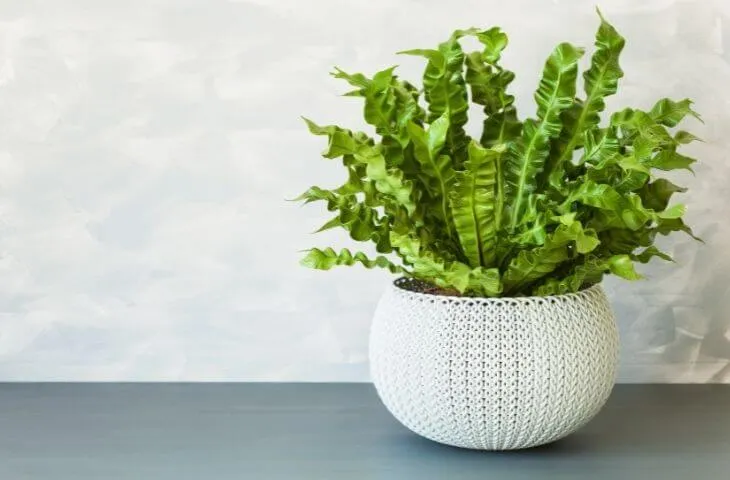
The bird’s nest fern is non-toxic to a variety of reptiles, including blue tongue skinks. It’s a beautiful fern with long, broad, apple green leaves. These leaves form a nest-like structure in the center of the plant, and this is what gives the plant its name.
The leaves make for an ideal and cool hiding place away from the basking spot. Keep the fern trimmed down, however, as the leaves, if left alone, can grow quite large. Luckily it’s not that fast-growing, so you won’t have to keep the pruning shears handy every week!
4. Carex Grass / Sedge grass (Carex pendula)
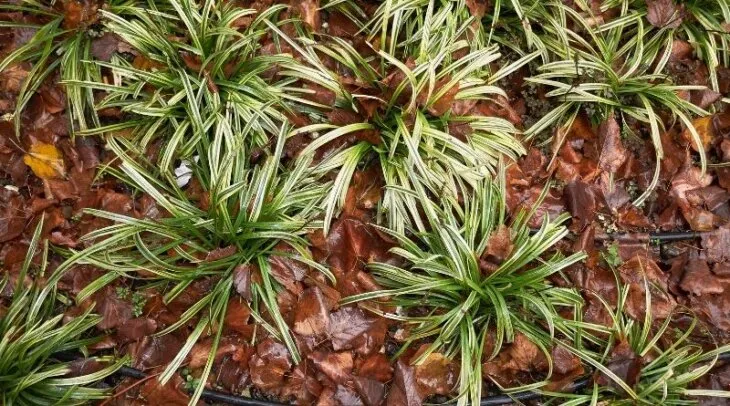
These grasses are easy-to-grow shade perennials that look wonderful in a blue tongue skink’s
Carex grasses are also hardier than they seem and, if their foliage is looking a bit worse for the wear because of your blue tongue skink’s ramblings, you can simply trim the grass right back and let it grow again.
5. Carrot Greens (Daucus carota subsp. sativus)
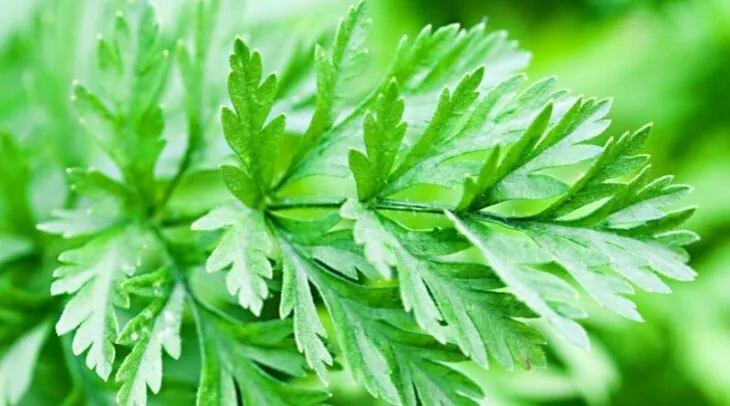
An ideal snack for your blue tongue skink is some carrot greens – and you can grow carrot greens from your kitchen scraps! After growing them outside the
By planting the carrot tops, you can leave your blue tongue skink to eat the greens in their own time, without the stems and leaves wilting – as they would if you simply cut the greens off carrots and placed them in the
Note: Make sure that you use organic carrots, or carrots that you have grown yourself from seed. The last thing you want is for your blue tongue to ingest any insecticides or pesticides that remain on them!
6. Dandelion Greens And Flowers (Taraxacum officinale)
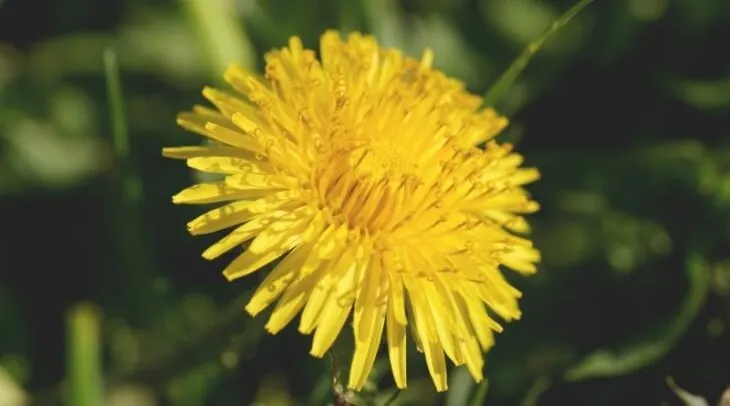
Dandelion greens (the leaves of the dandelion plant) and their flowers are a blue tongue skink favorite. Dandelions also grow quite easily and adapt to different temperatures and humidities, making them ideal for your blue tongue skink’s
Note: Don’t just go and pick dandelion greens just anywhere – you may pick dandelions that have been contaminated with insecticides or other types of poison and indirectly poison your blue tongue skink.
7. Dracaena Twister/ Dracaena Compacta (Dracaena fragrans)

This beautiful plant with its sturdy, dark green leaves that grows in a spiral pattern is a perfect addition to your blue tongue skink’s
Not only is this plant beautiful, but it is also quite hardy – something that you need in the plants you put in the
8. Hibiscus Flowers and Leaves (Hibiscus)
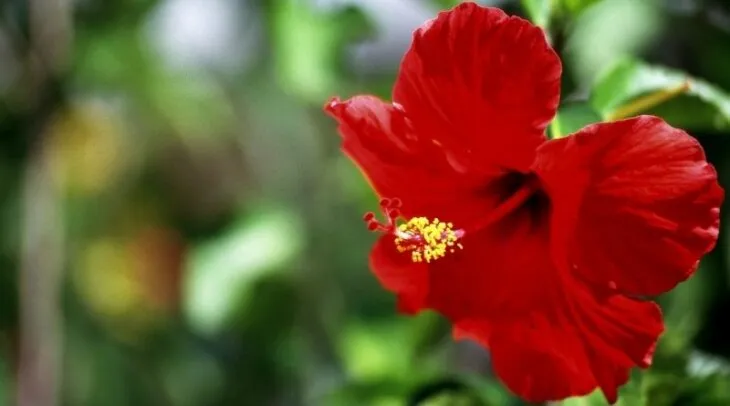
Most blue tongue skinks enjoy munching on hibiscus flowers and leaves and this plant – of which there is a huge variety – can make a stunning addition to your BTS’s
Be sure to only give your blue tongue skink hibiscus flowers and leaves that have not been in contact with insecticides, pesticides, and non-organic fertilizers; as this can be extremely bad for them and could potentially poison them.
It’s therefore not a good idea to pick hibiscus flowers and leaves from gardens or in the wild.
9. Mint (Mentha | Mentha spicata)
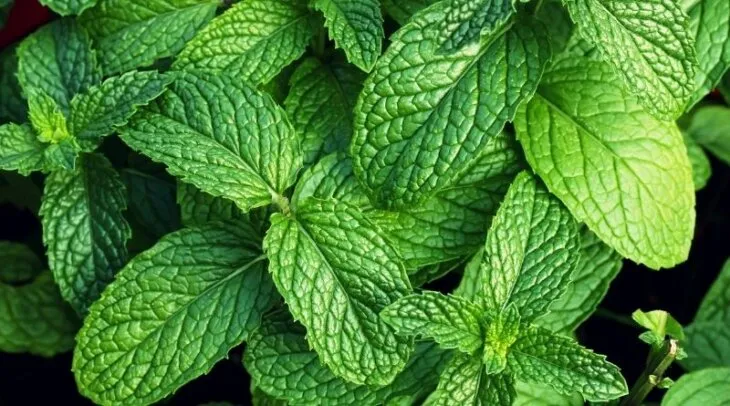
Great for making mojitos and great for your blue tongue skink to eat! Garden mint (or spearmint) is safe to feed to your blue tongue skink and you can even plant a mint plant in your bluey’s
If you do plant this herb in your blue tongue skink’s
Again, make sure that the mint you give to your blue tongue skink is completely insecticide, pesticide, and non-organic fertilizer-free to keep your bluey safe.
10. Nasturtiums (Tropaeolum)
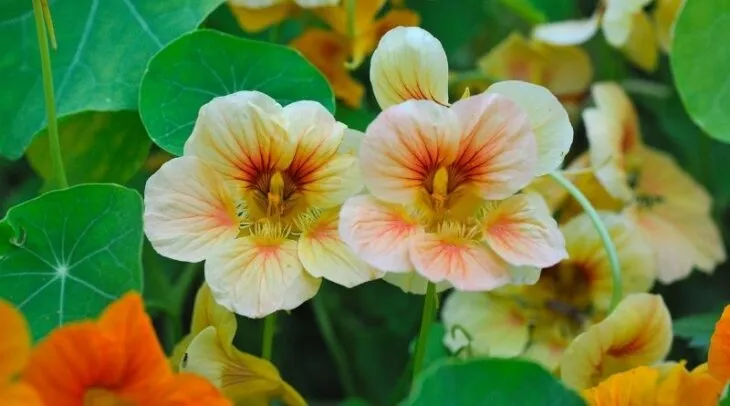
These bright flowers are a blue tongue skink favorite. Just a word to the warning that this plant can be decimated relatively easily by blueys, so just beware of that if you decide to plant one in their
You can always simply harvest the flowers from plants that you’re positive haven’t been in touch with insecticides, pesticides, etc., and feed those to your blue tongue skink instead of having the whole plant in the
11. Pet Grass (Dactylis glomerata)
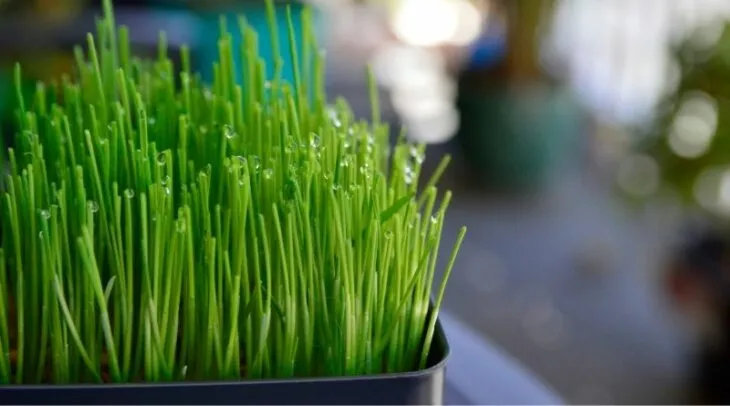
Pet grass isn’t just for cats and dogs – your blue tongue skink will also enjoy feasting on the fast-growing grass and may even hide among the grass once it’s grown enough.
Plant the pet grass in a container and place the container in the
12. Pothos (Epipremnum aureum)
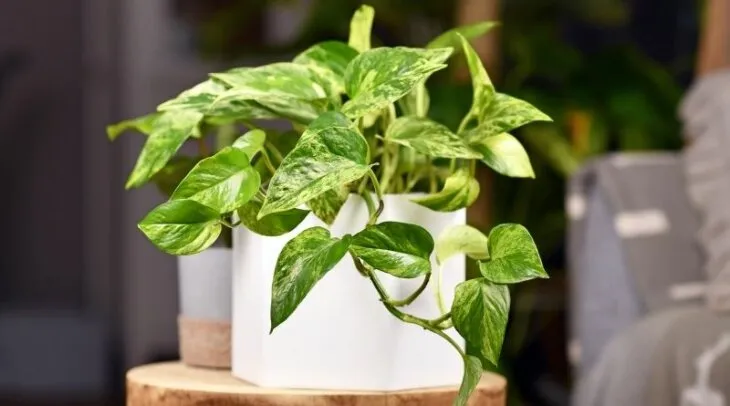
This vine makes for a stunning addition to any blue tongue skink
Keep it trimmed, however, as the trailing vines can grow to a length of 40 ft if left to their own devices!
13. Rosemary (Salvia rosmarinus)
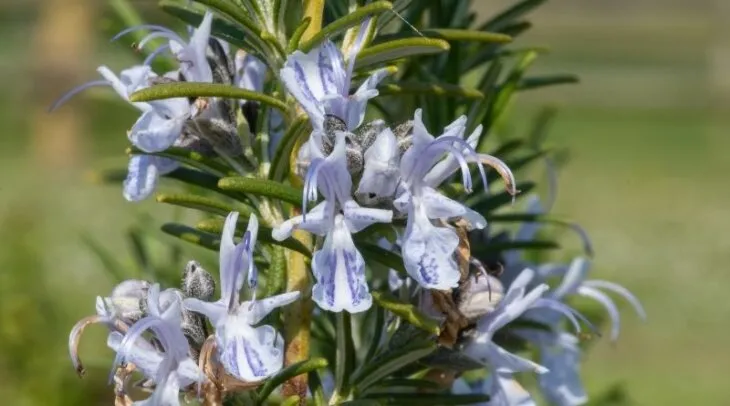
Another common herb that is great for your blue tongue skink, is rosemary. If you decide on planting rosemary in your blue tongue skink’s
As with the other plants we’ve mentioned, make sure that the rosemary is free of pesticides, insecticides, and non-organic fertilizers.
14. Sanseverias/Snake Plants/Mother in-law’s Tongue (Sanseveria laurentii)
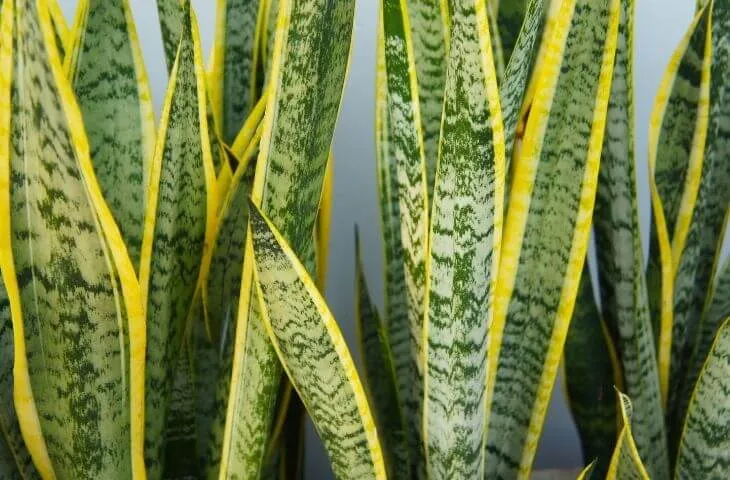
Snake plants, with their tall, fleshy leaves, make an ideal focal point for your blue tongue skink’s
These plants thrive in low or bright light and only need a little watering – which in the case of your bluey’s
15. Wheatgrass (Triticum aestivum)
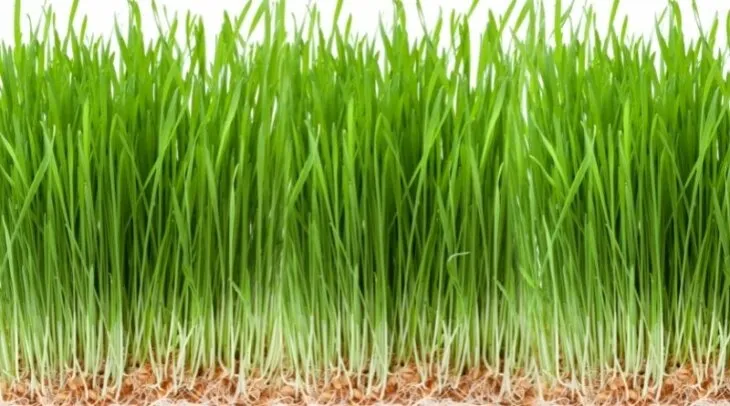
Much like pet grass, wheatgrass grows quickly and also makes a healthy snack for your blue tongue skink. You can buy some wheatgrass from a specialty pet store, a health
(Make sure they’re free of any poisons, etc. before putting it in your blue tongue skink’s
7 Other plants that are suitable to feed to your blue tongue skink
- Bok choy
- Cilantro
- Collard greens
- Kale and spinach
- Mustard greens
- Prickly pear cactus pads (with the spines removed)
- Rose petals
- Turnip greens
Note: When you give your blue tongue skink prickly pear cactus pads, you have to be extremely careful to first remove all the spines so that it’s safe for your bluey to eat. (And be careful not to injure yourself in the process!)
Plants That You Should Not Use In Your Blue Tongue Skink’s Tank
Although there are a large number of plants that you can feed your blue tongue skink, there are also some plants that you should steer clear of as they are poisonous to blueys.
These toxic plants include:
- Avocado fruit and leaves
- Azalea flowers and leaves
- Buttercup flowers and leaves
- Citrus fruits and leaves
- Daffodil flowers and leaves
- Eggplants
- Garlic plants
- Lily of the valley flowers and leaves
- Marijuana or hemp leaves
- Onion plants
- Rhubarb plants
- Tulip flowers and leaves
Are Succulents Safe For Blue Tongue Skinks?
Not all succulents are safe for blue tongue skinks to eat or to have in their
Succulents that are safe to use in your blue tongue skink’s tank include:
- Echeveria – this succulent is easy to take care of and thrives in bright light.
- Pachyveria – this succulent is a hybrid of echeveria and pachyphytum that thrives in bright light and high temperatures, making it ideal for blue tongue skink tanks.
- Sempervivum (hens and chicks) – a popular houseplant, this succulent is also non-toxic to blue tongue skinks and other reptiles.
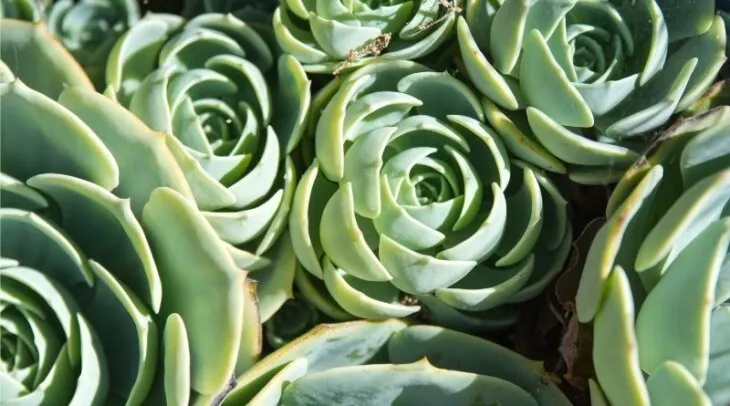
How To Choose Which Plants To Use In Your Blue Tongue Skink’s Tank
With such a wide variety of plants that can be used in your blue tongue skink’s
Two things you should keep in mind when you decide on plants, are:
- The age and size of your blue tongue skink
- The size of your blue tongue skink’s
tank .
Your Blue Tongue Skink’s Age and Size
A baby or juvenile blue tongue skinks are a lot less destructive when it comes to plants that have been planted in their
Once your blue tongue skink has reached maturity though, you’ll find that they can easily “bulldoze” these soft plants.
While you can still feed your blue tongue skink these softer plants, you can rather plant things like bird’s nest fern, dracaena twisters, snake plants, and succulents in their
The Size Of Your Blue Tongue Skink’s Tank
Because blue tongue skinks love to burrow, their
You may decide to start with a smaller
In this case, it’s better to start off with younger, smaller plants and then move on to large(r) plants when you move your bluey to their large
Can You Use Potted Plants In Your Blue Tongue Skink’s Tank ?
Yes, you can use potted plants in your blue tongue skink’s
Because blue tongue skinks love to burrow, having plants planted directly into the substrate will mean lots and lots of unintentionally destroyed and uprooted plants.
When you use potted plants, however, your blue tongue skink will have to burrow around the plants’ pots; thereby keeping the plants safe.
Tip: Place some pebbles in the bottom of the pots for extra weight and stability. It will also help to drain away the water when you take the plants out of the
tank for a good watering. (Keep reading to find out the best ways to water the plants in your blue tongue skink’stank .)
Using potted plants also makes it easy to remove and replace your blue tongue skink’s plants as necessary. Potted plants also make it easy to rearrange the
By giving your bluey a “new” environment to explore, you’ll provide some extra stimulation and keep them from getting bored.
Tip: Start with the smallest pot possible for the plants and then start to use bigger pots only as needed. This will help you to give your blue tongue skink more space to move around in as well as keep the size of the plants under control.
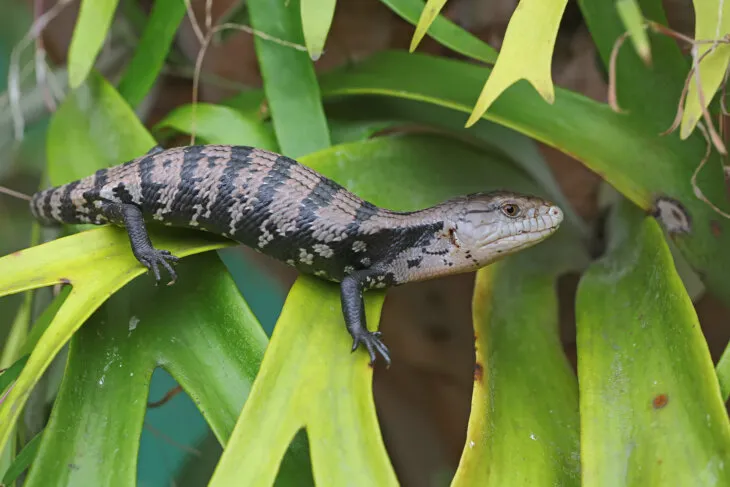
What To Do With Your Blue Tongue Skink Tank ’s Heat Mat If You Use Live Plants
If you’ve decided to use a heat mat with your blue tongue skink’s
When you use a heat mat to increase the temperature within your blue tongue skink’s
Putting the heat mat on the side of the tank will ensure that the substrate that you’re using gets cooler the further away from the surface it is. This is completely natural and your blue tongue skink will also enjoy this other way of cooling down.
Because the substrate is cooler beneath the surface, the plants in the
In fact, knowing the temperatures the plants normally thrive in is very important if you want to keep them healthier and happier for longer.
Why You Should Know Plants’ Maximum Temperature And Humidity Tolerance When Using Them In Your Blue Tongue Skink’s Tank
Because plants’ temperature and humidity needs are quite different and can mean the difference between a plant thriving and dying, knowing the maximum temperatures, humidity tolerances and watering schedules of plants makes it much easier to set up your blue tongue skink’s
In the table below you’ll see that we also recommend the placement of the plant within the
Plants’ Maximum Temperatures, Recommended Placement, and Watering Schedule
| Plant Name | Maximum Temperature | Humidity Tolerance | Recommended Placement | Watering Schedule |
| Basil | 80°F | 27°C | Up to 85% | Plant it on the cool side of the | Mist when the soil starts to dry out. |
| Beet greens | 95°F | 35°C | Up to 98% | Plant it on the warm side of the | Keep the soil moist, but not wet, misting every 1 – 2 days. |
| Bird’s nest fern | 80°F | 27°C | 40 – 60% | Indirect, low light – plant this fern on the cool side of the | Wait for the soil to dry out before watering again. Water every 1 to 2 weeks with misting as needed. |
| Carex/Sedge grass | Thrives in a wide variety of temperatures and humidities, depending on the type of carex/sedge. | Thrives in a wide variety of temperatures and humidities, depending on the type of carex/sedge. | Plant anywhere in the | Mist 2 to 3 times per week when the soil starts to dry out. |
| Carrot greens | 86°F | 30°C | 65 – 75% | The carrot tops can be planted from the middle of the | Mist lightly every or every second day. Water well weekly when you’re cleaning the |
| Dandelion greens and flowers | 86°F | 30°C | 40 – 70% | The dandelions can be planted from the middle of the | Mist lightly every day or every second day. |
| Dracaena twister | 80°F | 27°C | 40 – 60% | Plant the dracaena on the cooler side of the | Mist when the soil starts to dry out. Doesn’t need much water. |
| Echeveria | 95°F | 35°C | 40 – 60% | Plant the echeveria on the warm side of the | Mist when the soil dries out – these succulents don’t need a lot of water. |
| Hibiscus flowers and leaves | 115°F | 46°C | 60 – 80% | Plant the hibiscus on the warm side of the | Mist daily or at least every second day. |
| Mint | 80°F | 27°C | 40 – 60% | Plant on the cooler side of the | Keep moist by misting every day or every second day. Don’t give too much water at any one time |
| Nasturtiums | 80°F | 27°C | 40 – 60% | Can tolerate bright light, but rather plant on the cool side of the | Mist 2 to 3 times per week – don’t let the soil get too dry or stay wet. |
| Pachyveria | 109°F | 43°C | 40 – 80% | Plant these anywhere in the | Mist once or twice per week. Let the soil dry out a bit between mistings. |
| Pet grass | 75°F | 24°C | 40 – 60% | Plant on the cool side of the | Mist 2 to 3 times per week to keep soil moist but not wet. |
| Pothos | 80°F | 27°C | 50 – 70% | Plant on the cool side of the | Let the soil dry a bit between mistings. No need to water |
| Rosemary | 80°F | 27°C | 50 – 80% | Plant the rosemary on the cool side of the | Mist 2 to 3 times per week, but be careful to only keep moist and not wet. |
| Sansevieria / Snake plants | 75°F | 24°C | 40 – 60% | Plant on the cool side of the | Mist once or twice per week – don’t let the soil get too wet or the roots will start to rot. |
| Sempervivum/Hens and chicks | 75°F | 24°C | 40 – 60% | Plant the hens and chicks in the coolest part of the | Mist these once per week as they don’t need a lot of water. |
| Wheatgrass | 75°F | 24°C | 40 – 60% | Plant wheatgrass on the cool side of the | Mist 2 to 3 times per week to keep soil moist but not wet. |
What To Do If The Humidity In Your Blue Tongue Skink’s Tank Gets Too High?
If you see that the humidity in your blue tongue skink’s
One reason why the humidity in your bluey’s
If the humidity stays too high for your blue tongue skink (for example if they need 20% – 40% humidity like the shingleback, western, and centralian blue tongue skinks) you can open the
This will allow the humidity to drop quickly in a short time period. Just be careful that the humidity doesn’t get too low for those blue tongue skinks who need a humidity of 60% – 80% (those from Indonesia mostly).
If you find that the humidity stays too high for a couple of hours, try watering the plants in the
How To Water The Plants In Your Blue Tongue Skink’s Tank
The best way to water the plants in your blue tongue skink’s
Take care not to use too much water all at once and mist each of the plants that need to be watered. Your bluey will also enjoy getting their fill of water by licking the leaves of the plants.
If you have a plant that needs a thorough watering and not just a misting, use the time when you’re cleaning your blue tongue skink’s
The extra water will then have time to drain from the plant while you’re cleaning the
Tip: Refer to the table in this article for individual plants’ watering needs.
How To Choose Healthy Plants For Your Blue Tongue Skink’s Tank
The first thing to keep in mind when you’re buying plants for your blue tongue skink’s
The plants that you choose (or receive) should furthermore not be wilted or discolored. This can also point to illness in the plant.
If you receive plants by delivery and find that they are only slightly wilted, give them some water and see whether they perk up after a while or not. It may simply be that the delivery van was too hot or the delivery took too long.
When buying plants for your blue tongue skink’s
Conclusion
There are a wide variety of plants that you can feed your blue tongue skink and decorate their
Keep the different plants in rotation in and out of the blue tongue skink’s
- Enchi Ball Python: A Unique and Stunning Morph of Python regius - March 27, 2025
- Emerald Tree Monitor: The Enigmatic Green Guardian of the Rainforest - March 26, 2025
- The Egyptian Cobra (Naja haje): A Fascinating Serpent - March 25, 2025
